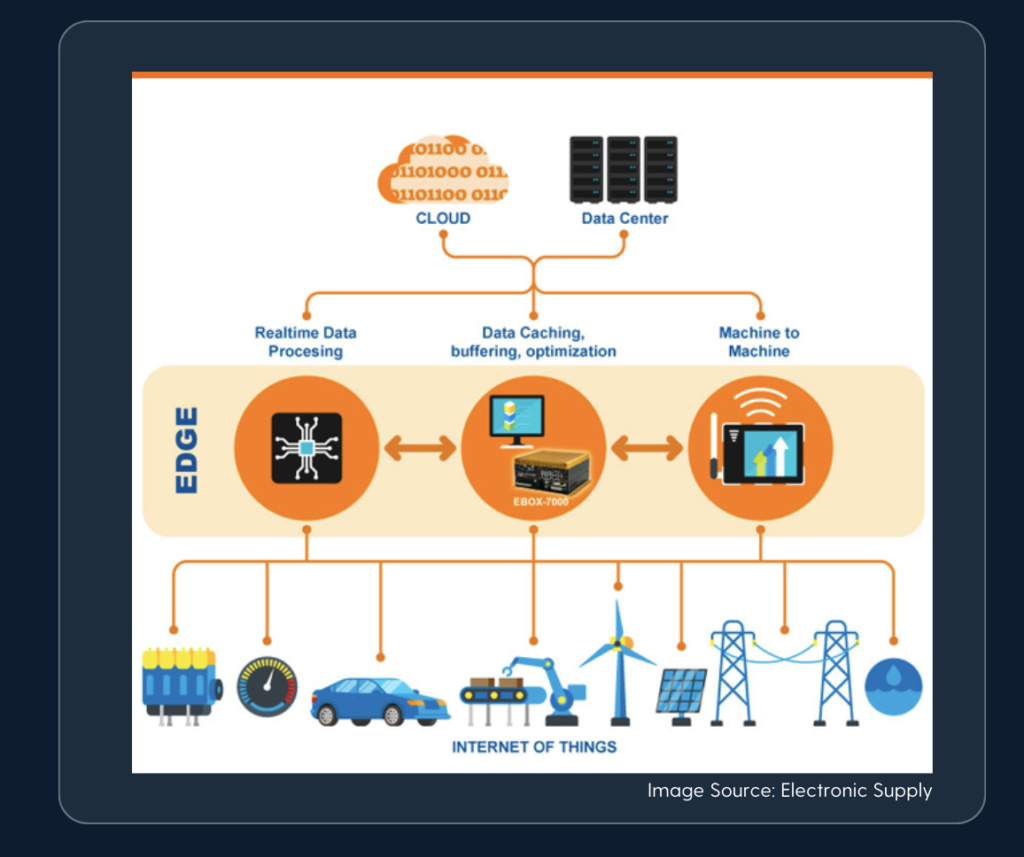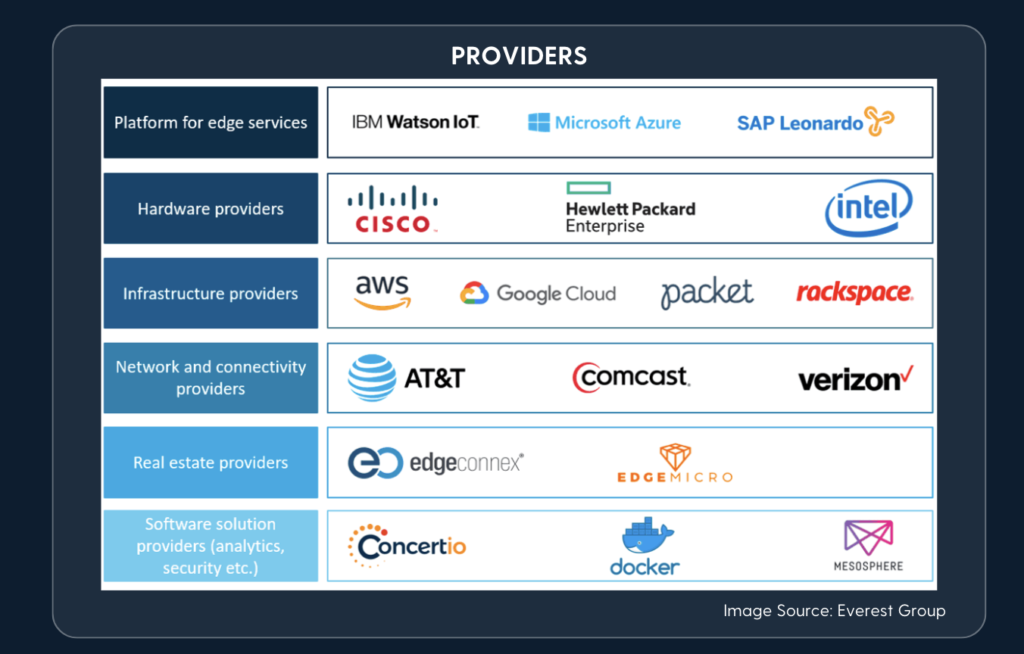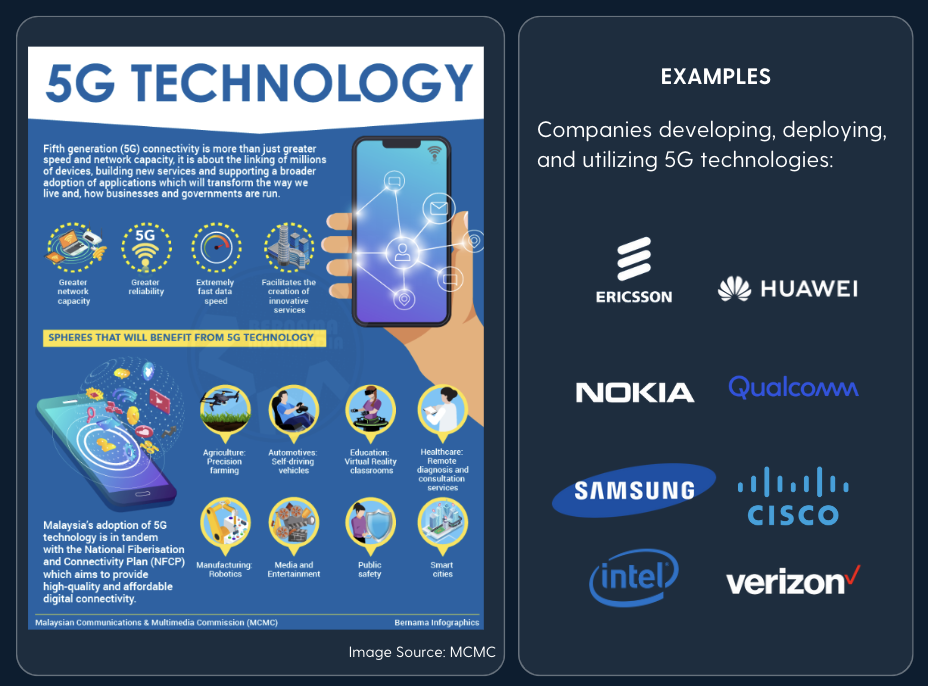
Edge Computing in a Connected World: Enhancing Speed and Efficiency
Interconnected devices, data-driven decision-making, and lightning-fast digital experiences, has led to a demand for instant and reliable computing power has reached unprecedented heights and edge computing promises to revolutionize the way we process, analyze, and leverage data in real-time. As the digital world expands and devices become smarter, traditional cloud computing approaches face limitations in latency, bandwidth, and privacy. Edge computing emerges as the solution, bringing computation closer to the source of data generation and unlocking a new era of agility, responsiveness, and limitless possibilities.
Edge computing allows data from IoT devices to be analyzed “on the edge” of the network before being sent to a data center or cloud. Running local processing allows edge devices to respond quickly and reduces the burden on network bandwidth. In a very near and possible future, envision all these scenarios becoming a reality:
- Autonomous vehicles navigate complex city streets with split-second precision
- Smart cities that seamlessly monitor and optimize energy consumption, traffic flow, and public safety in real-time,
- Immersive augmented reality experiences that blur the line between the digital and physical realms, offering seamless interactions with the world around us.
Well, these transformative advancements are made possible by the disruptive force known as edge computing.
While cloud computing has undoubtedly been a major breakthrough, it relies on centralized data centers located far away from end-users and devices. This geographical gap introduces latency, bandwidth constraints, and privacy concerns that can hinder the performance and responsiveness of critical applications. Edge computing, on the other hand, takes a distributed approach, placing computational resources closer to the edge of the network, in close proximity to where data is generated. By leveraging edge computing, organizations can process and analyze data in real-time, right at the edge of the network, eliminating the need to transmit vast amounts of data to distant data centers. This proximity allows for near-instantaneous decision-making, enabling time-sensitive applications that demand split-second responses. From autonomous vehicles reacting to changing road conditions to industrial machinery optimizing operations on the fly, edge computing empowers a world where delays are virtually non-existent.
Furthermore, edge computing unlocks a new level of scalability, flexibility, and cost-effectiveness. Instead of relying solely on centralized cloud infrastructure, edge computing distributes the workload across a network of edge devices, reducing the strain on centralized resources and enabling efficient utilization of computing power. This decentralized approach not only enhances performance but also enhances resilience, as localized processing ensures that critical applications can continue functioning even in the face of connectivity disruptions.
As we venture into an era of hyper-connectivity and intelligent ecosystems, edge computing stands as the foundation for unlocking the full potential of emerging technologies and driving forward the fourth industrial revolution.
Main Edge Computing Devices
IoT sensors, smartphones, PCs and tablets, security cameras, smart speakers, and drones.,,,,,
Pros
- Reduced Latency
- Bandwidth Optimization and Reliability
- Decrease in Server Resources and Associated Costs
- Enhanced Privacy and Security (sensitive data to be processed and stored locally)
Cons
- Potential Increase for Malicious Attackers
- Requires More Hardware: Complexities of managing a large number of devices (data consistency/synchronization, cost, and maintenance)
Use Case
- Smart Cities: Enables real-time monitoring and control of systems like traffic lights, parking meters, and environmental sensors.
- Autonomous Vehicles: Rapidly process data for tasks like camera sensors, object recognition, and path planning.
- Video Surveillance: AI capabilities that analyze video footage locally to detect anomalies, identify objects, or trigger alerts.
- Healthcare: Real-time monitoring, remote patient care, and timely analysis of patient data through wearable devices and medical sensors.


Utilities
- IoT and Smart Cities: 5G enables the growth of the IoT by providing the necessary connectivity, speed, and capacity to support a vast number of connected devices. It paves the way for advancements in smart cities, autonomous vehicles, connected healthcare, and other IoT-driven applications.
- Edge Computing: 5G’s low latency and high bandwidth capabilities are driving the adoption of edge computing. Processing data closer to the edge of the network reduces latency and enables real-time applications, such as augmented reality (AR), virtual reality (VR), and autonomous systems.
- Industry Transformation: 5G is expected to revolutionize industries such as manufacturing, transportation, logistics, and healthcare. It enables the implementation of advanced technologies like robotics, automation, remote surgery, and smart factories, leading to increased efficiency and productivity.
- Enhanced Mobile Experiences: With 5G, mobile users can experience faster download and upload speeds, high-quality video streaming, seamless gaming, and immersive AR/VR experiences on their devices.
